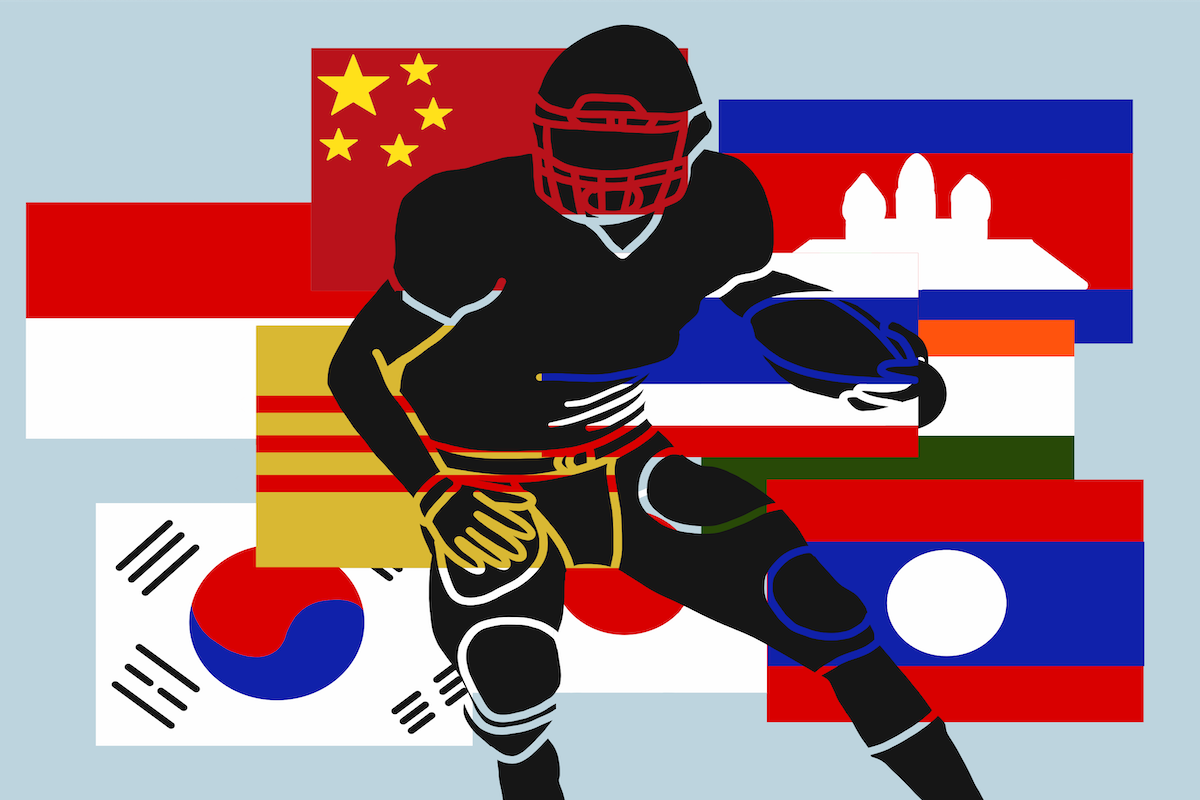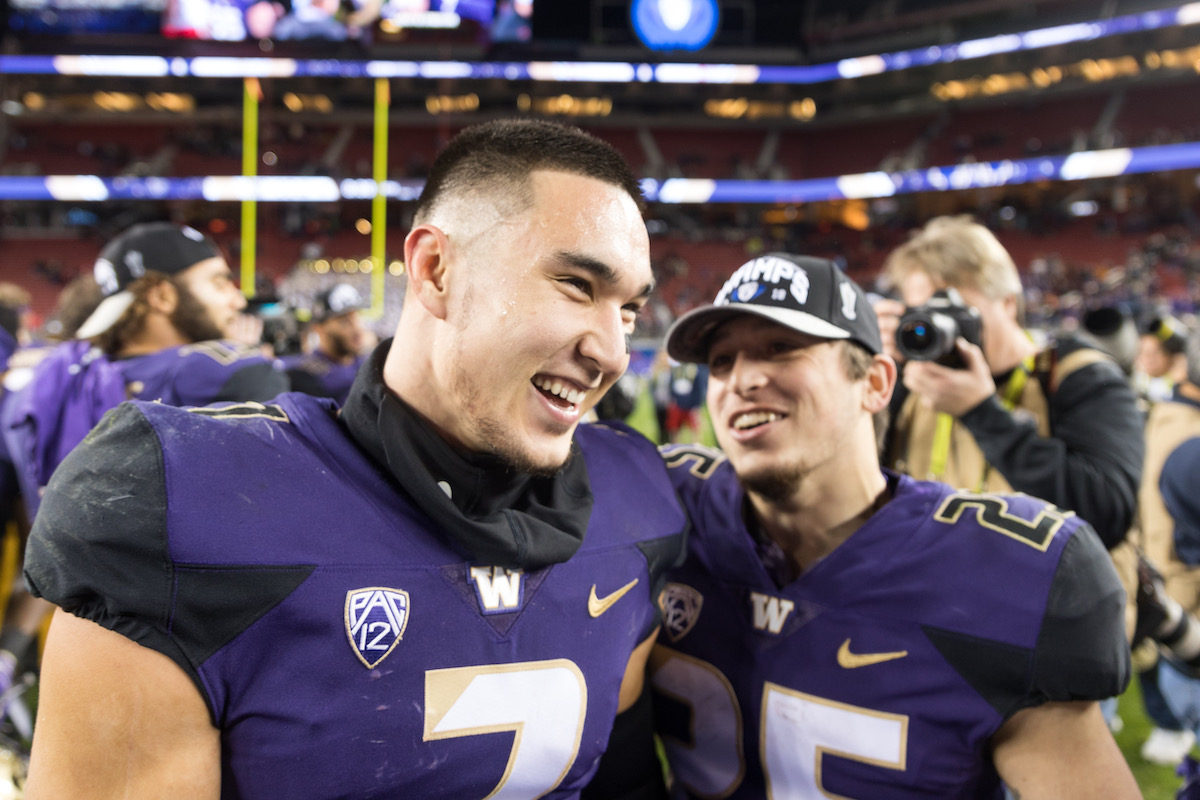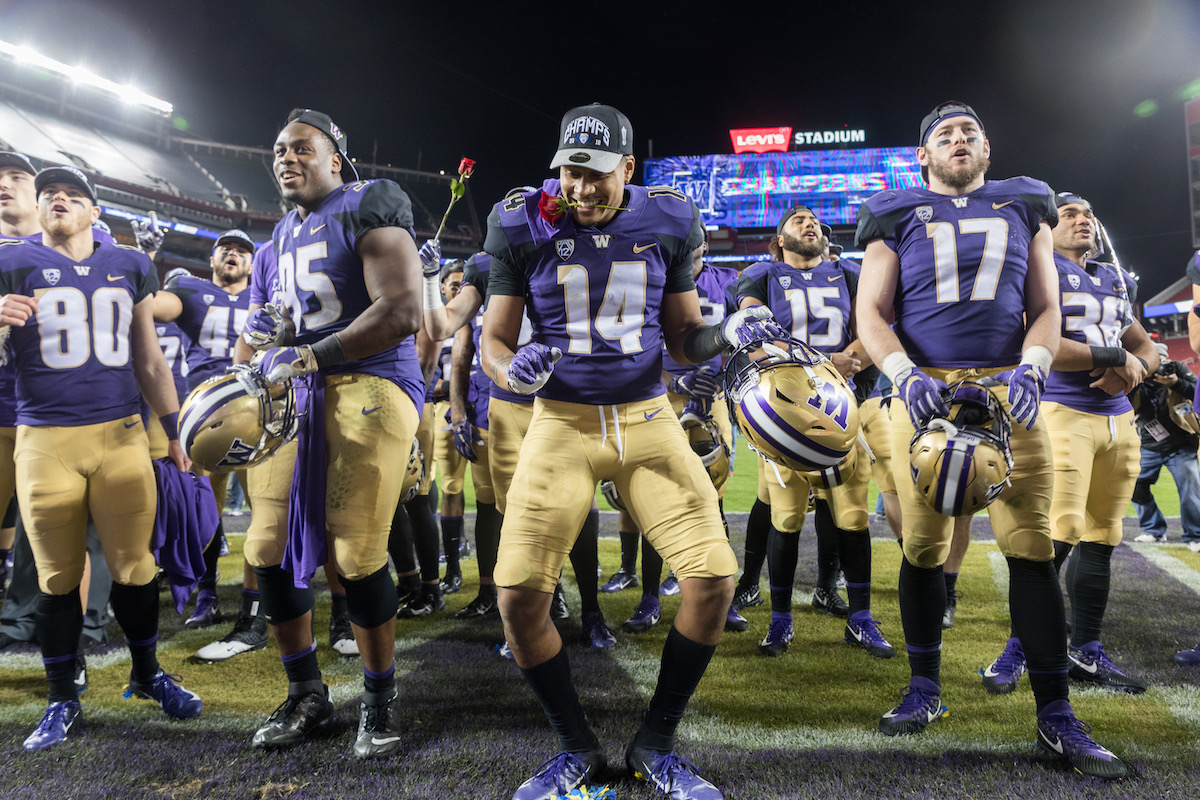
The first word that Benjamin Solak, a draft analyst on The Draft Network, uses to describe University of Washington football player Taylor Rapp is “smart.”
“Smart, aggressive player who fills multiple roles within the back seven. Recognizes running game flow and misdirection very quickly and regularly takes the correct angles to attack offensive concepts; does well to retain leverage when approaching tackles to defend the weakest area of the field/turn runners back into help.”
Then — as analysts do with all players in the draft — Solak lists Rapp’s cons.
“Not overly rangy. Despite strong linear burst, top speed does not impress. Some tightness in the hips limits ability to turn corners with explosion, which gives him issues when flipping his hips to carry deep routes from the slot. Will take drop step when exploding, which only adds to the delay. Physical limitations in a straight line could force him into exclusively short zone responsibilities in the NFL, which would cap his efficacy as an interchangeable defensive piece.”
Solak might be right on all the things he’s said about Rapp, a three-year University of Washington safety entering this year’s NFL draft who also is half-Chinese American. But labeling the former Husky as a cerebral player whose brains cover for his physical limitations plays into common stereotypes about athletes — as well as historical stereotypes about Asian Americans.
While most people in the United States might struggle to name more than five current athletes who are Asian, a new wave of Asian American athletes are entering the realm of professional sports in the United States.
They include Heisman-winning Oklahoma quarterback Kyler Murray, who is half-Korean; reigning U.S. Open and Australian Open champion Naomi Osaka, who is Japanese-Haitian-American and represents Japan in tennis; Korean American snowboarder Chloe Kim who took the 2018 Winter Olympics by storm; and Rapp’s partner in the Washington secondary, Jojo McIntosh, who is is part Cambodian.
“We make a joke in the locker room that me and Taylor are the only duo Asian safeties in college football,” McIntosh told NFL.com in a feature about Rapp. “We talk about how to grow the game and opportunities for all Asians.”
So as more Asian American athletes make it to the big time, it’s important to take a look at how the fans and the media talk about them. Stereotypes are as deeply ingrained in the history of sports as they are in the Asian American experience.

No league in America is as prone to using stereotypes as the one Rapp wants to enter. For example, this article by the Washington Post compared how racial stereotypes affected the analysis of two of the top quarterbacks in the 2017 NFL draft — Clemson’s DeShaun Watson and North Carolina’s Mitchell Trubisky — and how that language affected their draft prospects.
Analysts often say that Black players like Watson are talented, blessed or natural athletes — and are described by their physical traits such as hand size and speed. White players like Trubisky, on the other hand, tend to be noted for intangibles such as leadership, poise and stature, and are called hard-working, or cerebral.
Trubisky was selected second overall. Watson, who led Clemson to be the College Football Playoff national champions, was selected 12th.
“Psychologically, stereotypes have an immense effect on athletes,” said Dr. Alyssa Hellrung, a part-time lecturer in the Gender, Women’s Studies, and Sexuality Department at the UW focusing on gender in sports. “At best, the knowledge that stereotypes about athletes are out there may cause athletes to work harder to prove that they belong. At worst, an athlete who maybe doesn’t fit the stereotypical mold of others who play in their sport or league may suffer from impostor syndrome,”
This kind of commentary often arises because people are too lazy to really look at what makes an athlete unique and talented, kind of like a safety net of assumptions that the media can make and get away with. The language is then passed down to fans, who use it as well.
And it’s harmful to both sides. Black athletes are told their talent is the only reason they are there, ignoring the hard work it takes to become a professional athlete, while white athletes are made to believe that they are easily replaceable and that their work ethic is the only important trait they have, diminishing their natural abilities.
Besides psychological impact on athletes, there is also a lot of money at stake here. Where a player gets drafted determines how much money they can earn on their rookie contract, and just a few spots can mean a difference of millions of dollars. How the media and insiders talk about a player can determine where in the draft they are taken.
Two years on from the questions about Watson and Trubisky, and the choice seems pretty clear cut. Despite both QBs making the Pro Bowl, Watson leads Trubisky in yards, touchdowns, completion percentage, and has thrown less interceptions though Watson played in three fewer games. Yet Trubisky will make $15 million more than Watson when their rookie contracts expire.
Unlike Black and white athletes, Asian Americans don’t quite have that same set stereotypes in sports because there have been so few of them. Ed Wang became the first Chinese American football player ever drafted in 2010 and is still the only Chinese American ever drafted. Jeremy Lin remains one of just three Asian Americans in the NBA, despite the fact that Linsanity took place almost a decade ago.
“At times it kind of sucks,” Lin told the Undefeated. “At other times it’s amazing. Amazing because you get to challenge everyone’s viewpoints and perspectives. I’m rooting for so many more Asians to come in.”

Stereotypes have always been a part of sports but they’ve also always been a part of the Asian American experience. Ever since immigrants from Asia arrived in this country searching for a better life, they have dealt with prejudice and crude preconceptions of who they are.
Early stereotypes of Asians in America played up the horde, population, or military threat of the home countries, and led to the banning of almost all immigrants from Asia during the early 1900s. It also helped foster the hatred that led to incidents like the Rock Springs Massacre in 1885 and Japanese incarceration during World War II.
After the war though, a new stereotype emerged — The Model Minority. Created during the peak of the Black Power movement, it set Asian Americans up as a smart, passive, docile but hard-working people as opposed to the outspoken Black activists of the time.
The model minority myth is a way to divide people of color — and is also bad for Asian Americans, says LeiLani Nishime, an associate professor of communications at the University of Washington. Her focus is on Asian representation in media.
“It was a way to play off Asian Americans against African Americans,” she said. “It made it seem like there was nothing the government needed to do, there was nothing society needed to reform. It also made it so that they could ignore the needs of the Asian American community.”
The model minority myth continues to plague Asian Americans to this day. It contributes to high levels of depression and anxiety for Asian Americans trying to live up to the ideal.
“If we’re so tied to this mythology of the model minority, anyone who steps outside of that myth gets slapped back into place,” Nishime said. “There’s a lot of social pressure for Asian Americans to fulfill that stereotype, which limits their own possibilities.”
Hellrung added that the lack of representation in the field could lead to Asian Americans restricting themselves from envisioning their opportunities.
“If a child or teenager is playing a sport that they love and even have some talent for, but then they begin to realize [no one else who looks like them] plays that sport, they may choose to leave the sport if they feel they don’t match the norm.”
To Nishime, the media is like a mirror, and she hopes that an Asian American football player like Rapp would create a more perfect reflection of a potential future for a group that has had to cross-racially identify for decades.
As I mentioned at the beginning, Rapp may be all the things that draft analysts say he is. But as Asian Americans begin to appear more often in professional sports, it is important the fans and the media stay vigilant about keeping racial and historical stereotypes out of sports.
“To me, it’s about gaining a platform that will help inspire a generation of Chinese and Asian American kids,” Rapp said in the interview with NFL.com. “I don’t want to be just an answer to a trivia question; I want to inspire and have a real impact.”


Great article highlighting important information!
Wow, as an Asian American, I appreciate the focus on this topic. Asian stereotypes are very common when it comes to students in a classroom, but their extension into athletics is a topic you don’t often hear about. Well researched, well written and well done!
Great article on Asian americans and sports. I’m looking into doing podcast on Asian American athletes and professionals in various media outlets. Do you know anyone that would be interested ? Thanks!
Iray50@gmail.com is my business contact